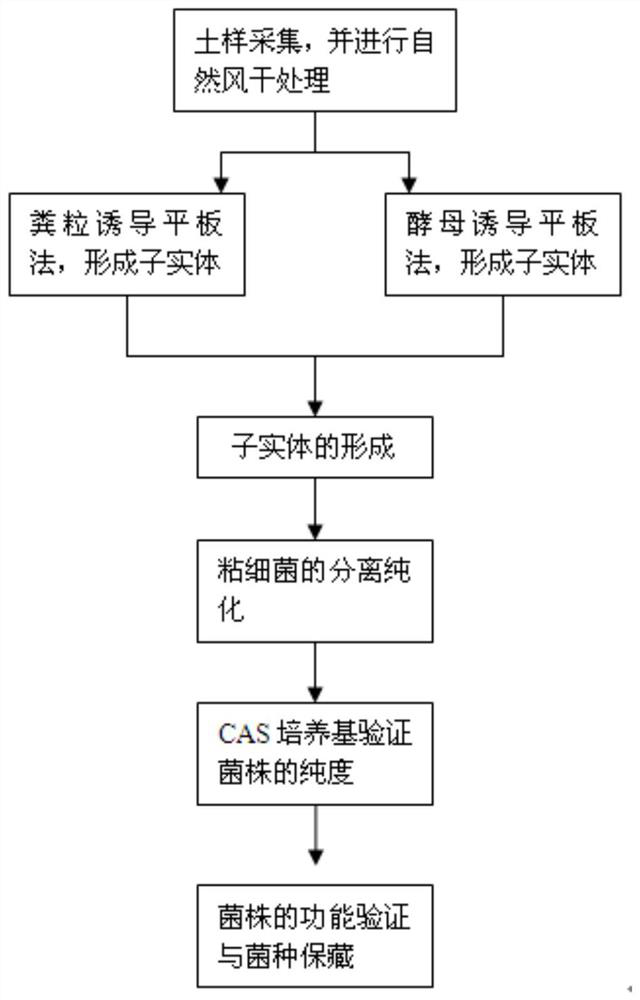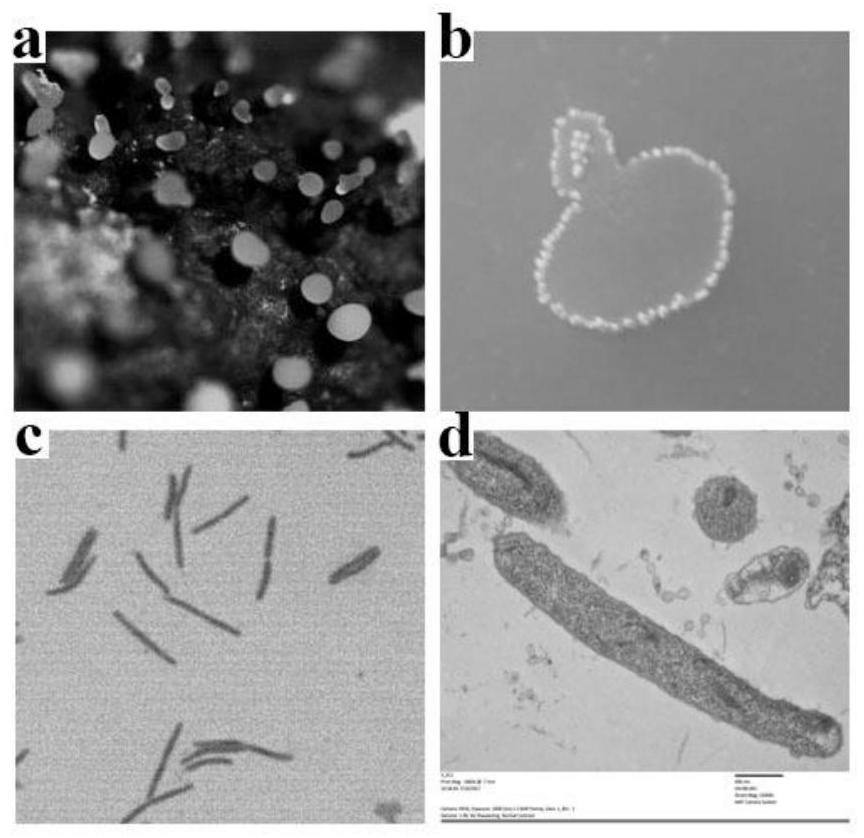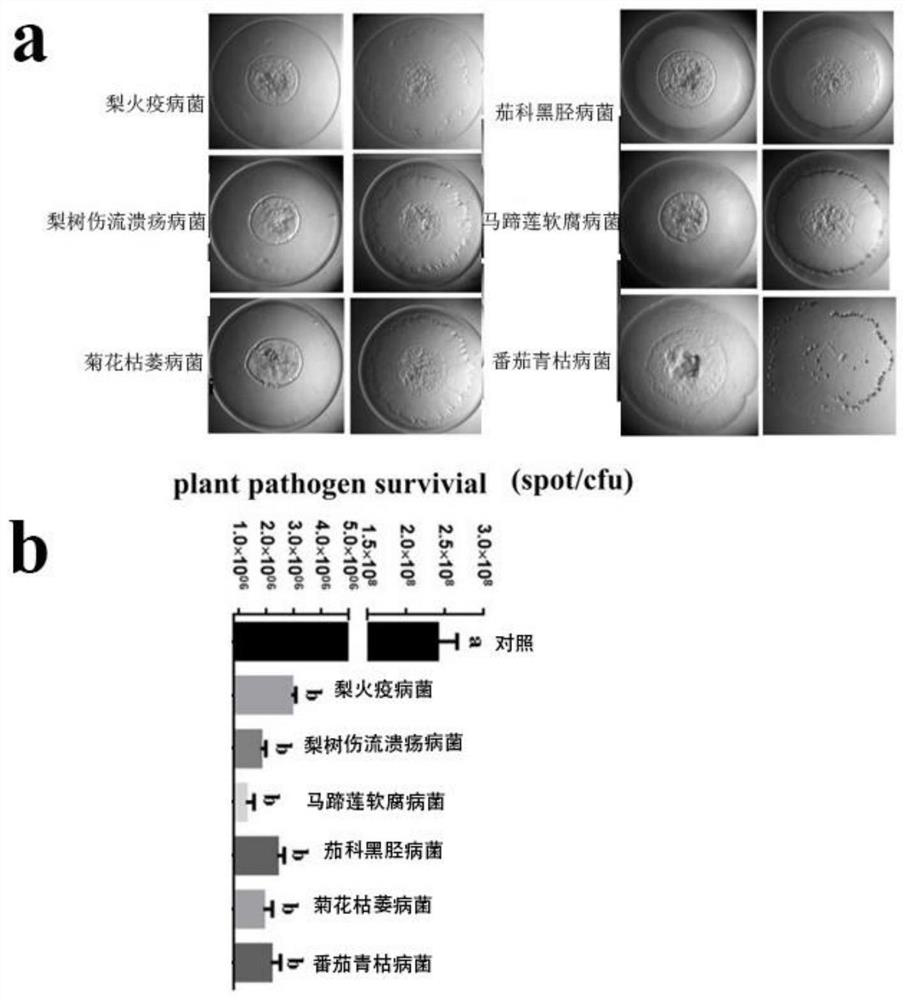Myxococcus petiole preying on plant pathogenic bacteria and its application in biological control of bacterial diseases
A technology of plant pathogenic bacteria and pathogenic bacteria, applied in the field of applied microbiology, can solve problems such as differences in antibacterial effects
- Summary
- Abstract
- Description
- Claims
- Application Information
AI Technical Summary
Problems solved by technology
Method used
Image
Examples
Embodiment 1
[0031] Example 1. Isolation and purification of strains
[0032] 1.1 After sample collection, air-dry naturally at room temperature (to reduce the contamination of mold and miscellaneous bacteria).
[0033] Soil samples were collected from Anhui and other places and air-dried naturally at room temperature.
[0034] 1.2 Induction of Myxobacter Fruiting Body
[0035] 1.2.1 Fecal particle induction plate method: put about 20 grams of air-dried soil samples in a petri dish, half-embed 3-4 sterilized rabbit feces on the surface of the soil samples, add 25 μg / ml of ether sterilized Nebendron (25mg / ml) or carbendazim (30mg / l), soaked for 6h, poured off the residual liquid, incubated at 30℃, and began to observe the formation of fruiting bodies on the fecal ball after 48h.
[0036] 1.2.2 Yeast induction plate method: take WCX (cycloheximide 25mg / ml) medium as the basal medium, pour it into a sterile plate, draw a cross line with yeast on the surface of the medium, and place a small am...
Embodiment 2
[0047] Example 2. Identification of strains
[0048] 2.1 Morphological features
[0049] The myxobacteria BS isolated and screened were negative by Gram staining, and observed under oil microscope by crystal violet staining. layer of mucus layer; observed by light microscope at 10×, it was found that the strain had a colony effect in the process of growth, and the colonies gathered together to form fruiting bodies at the later stage of growth ( figure 2 ).
[0050] 2.2 Identification
[0051] The 16S rDNA gene sequence of the strain was obtained by PCR amplification of the 16S rDNA of the strain, and the 16S rDNA sequence of the typical strain similar to the experimental strain was obtained by logging in to NCBI (www.ncbi.nlm.nih.govPblastP). The obtained sequencing results were compared with the known sequences in the database in the GenBank database using BLAST software, and the strain was preliminarily identified as Myxococcus stipitatus and named BS through sequence al...
Embodiment 3
[0052] Example 3. Research on the predation effect of Myxococcus stipitatus BS on phytopathogenic bacteria 3.1 Research on the predation effect of strain BS on various phytopathogenic bacteria.
[0053] Ea, Dickeya fangzhongdai, Dickeya chrysanthemi, Dickeya solani, Pcc, and RS were inoculated into LB liquid medium (tryptone 1%, NaCl 1%, yeast extract 0.5%), cultured at 30°C overnight, centrifuged at 8000 rpm for 3 min, and the cells were collected with Resuspend in sterile water to make it OD 600 is 10. It was suspended in TPM (10 mM Tris-HCl [pH 7.6], 1 mM KH2PO4 [pH 7.6], 8 mM MgSO 4 )) on a solid plate to dry before use. Strain BS (CCTCCM2017496) was inoculated into CYE liquid medium (Casitione 1%, Yaest extract 0.5% MgSO 4 ·7H 2 (00.1% pH 7.2-7.6), culture at 30°C for 2 days, centrifuge at 8000rpm for 3min, collect the cells, resuspend the cells with sterile water, and the cell concentration is 10 8 cells / l, hanging drop on the dried pathogenic bacteria moss, and cul...
PUM
 Login to View More
Login to View More Abstract
Description
Claims
Application Information
 Login to View More
Login to View More - R&D
- Intellectual Property
- Life Sciences
- Materials
- Tech Scout
- Unparalleled Data Quality
- Higher Quality Content
- 60% Fewer Hallucinations
Browse by: Latest US Patents, China's latest patents, Technical Efficacy Thesaurus, Application Domain, Technology Topic, Popular Technical Reports.
© 2025 PatSnap. All rights reserved.Legal|Privacy policy|Modern Slavery Act Transparency Statement|Sitemap|About US| Contact US: help@patsnap.com



